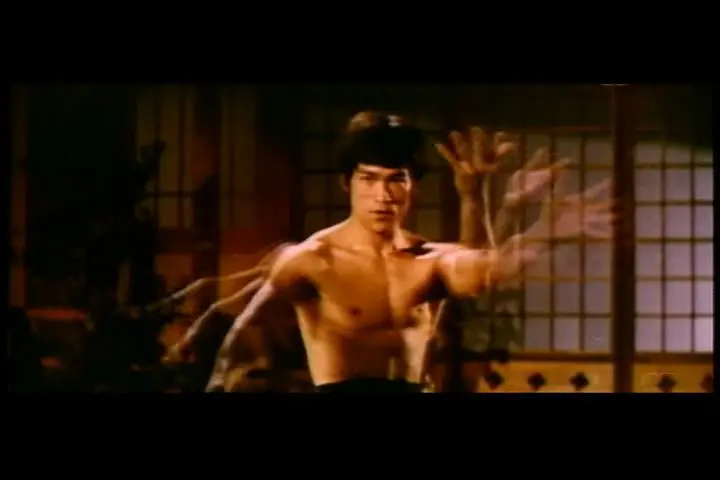Bruce Lee is more than just a cultural icon; he revolutionized martial arts cinema and left an indelible mark on the film industry. For kung fu enthusiasts, his films are not only entertainment but also a source of inspiration and powerful philosophy. In this list, we’ll explore ten unforgettable films that showcase Bruce Lee’s exceptional skills, charisma, and contributions to cinema.
1. The Green Hornet Telemovie
The Green Hornet, a television series that aired in the 1960s, introduced audiences to Bruce Lee in a significant role as Kato. His physicality and charisma shone through in this serialized narrative, showcasing his martial arts expertise. While the series was designed within a campy framework, Lee’s performances were anything but. His fast-paced fighting sequences captivated viewers, setting the stage for his future cinematic endeavors.
This telemovie stands as a pivotal moment in Lee’s career, as it opened doors for him in Hollywood. The chemistry between Lee and Van Williams, who played the titular character, introduced a new dynamic in action narratives. Lee’s unique style and charm captivated audiences, making Kato much more than just a sidekick. His ability to weave philosophy and action into his performances began to resonate deeply, hinting at the lasting impact he would make.
2. The Big Boss Masterpiece
The Big Boss, released in 1971, marked Bruce Lee’s first major role in a film and solidified his status as a martial arts superstar. The film’s gripping narrative revolves around Lee’s character, who becomes embroiled in a conflict against drug lords, showcasing not only thrilling fight scenes but also a story grounded in justice and retribution. Bruce Lee’s portrayal of martial arts as both an art and a weapon draws a distinctive line between good and evil.
What truly elevates The Big Boss is Lee’s unyielding charisma and intense fight choreography, combined with a plot that explores deeper themes. As he confronts the villains, the stakes are amplified, exemplifying the classic kung fu trope where the hero must rise against oppressive forces. Each kick and punch resonates not only with visceral excitement but also with the moral implications of Lee’s journey, making it a cinematic experience for fans and new viewers alike.
3. Fist of Fury and Its Impact
Fist of Fury, released in 1972, is one of Bruce Lee’s crowning achievements, presenting an emotionally charged portrayal of vengeance and honor. Set against the backdrop of Japanese oppression in Shanghai, Lee’s character becomes a symbol of resistance, fighting against those who would dishonor his loved ones. The film’s opening scene is particularly striking, immediately thrusting audiences into a world of tension and conflict.
This film is particularly well-known for its iconic fight sequences, which blend graceful choreography with raw power. Bruce Lee’s ability to mix speed and precision captures the essence of martial arts while conveying deep emotional stakes. The themes of cultural pride and righteousness speak volumes, resonating strongly with audiences both in Asia and the West. Fist of Fury not only solidified Lee’s status as a martial arts legend but also marked a significant evolution in how martial arts were perceived in cinema.
4. Way of the Dragon and the Epic Showdown
In Way of the Dragon, Bruce Lee not only stars as the lead but also takes the reins as the director. This film offers a unique blend of comedy and intense action, showcasing his versatility as both an artist and a martial artist. One of the standout features of the film is the legendary showdown between Lee and Chuck Norris in the Colosseum, which has since become iconic in martial arts cinema.
The epic showdown is more than just a test of physical prowess; it symbolizes the clash of different martial arts styles, presenting a narrative filled with tension and respect between two masters. This duel encapsulates Lee’s philosophy of martial arts as both a competitive sport and an artistic expression. The cinematography, combined with Lee’s unyielding determination, captivates audiences and cements this confrontation as a high point in his filmography.
5. Enter the Dragon’s Breakthrough
Enter the Dragon serves as Bruce Lee’s ultimate breakthrough into mainstream Hollywood, being one of the first martial arts films to gain international acclaim. Released in 1973, the film features Lee as an undercover agent who infiltrates a martial arts tournament. The narratives intertwine action, espionage, and personal tragedy, showing Lee’s character emerging from a deeply complex emotional backstory before confronting his enemies.
The fight choreography in Enter the Dragon is groundbreaking, introducing audiences to the elegant yet powerful movements that defined Bruce Lee’s fighting style. Each sequence was meticulously crafted to highlight both his physical skills and his charisma on screen. With memorable one-liners and a plot that explores themes of honor, betrayal, and justice, Lee’s legacy as a martial arts pioneer was cemented in cinematic history, setting a new standard for future action films.
6. The Chinese Connection’s Cultural Significance
The Chinese Connection—also known as Fist of Fury in the West—emphasizes the importance of cultural identity against colonial oppression. Bruce Lee’s character stands as a beacon of resilience, embodying the tensions present in 1970s Hong Kong. The film deals explicitly with themes of nationalism and interethnic conflict, shedding light on the struggles faced by the Chinese people during that era. Lee’s emphatic performances elevate the narrative, giving voice to their struggles.
The Chinese Connection not only delivers breathtaking fight scenes but also acts as a vehicle for social commentary. Bruce Lee’s emotional depth adds layers to his character, transforming him from a mere martial artist to a symbol of hope and resistance. This film is significant not just for its stunning choreography, but also for its poignant portrayal of cultural pride and identity, illustrating the role kung fu plays within that framework.
7. Game of Death and Its Iconic Moments
Game of Death is both a film filled with fascinating spectacle and a posthumous showcase of Bruce Lee’s martial arts skill. Although the film was completed after Lee’s untimely passing, it features some of his most memorable moments, including the iconic staircase fight scene, where he encounters various martial arts masters, each representing a different style. This sequence perfectly illustrates Lee’s philosophy of adaptability and the importance of understanding various martial arts techniques.
Moreover, Game of Death raises questions about legacy and the unfinished business of an artist. Despite its challenges, the film serves as a tribute to Bruce Lee’s enduring spirit and creativity, blending action with philosophical insights. Lee’s journey through each level of the tower symbolizes personal growth, where he confronts challenges not just externally, but also within himself. These layered storytelling elements make Game of Death an intriguing entry in his filmography.
8. The Way of the Dragon’s Unique Style
In The Way of the Dragon, Bruce Lee’s unique style is on full display, as he seamlessly incorporates comedy and action into a cohesive narrative. His ability to balance humor with intense fight sequences makes it distinct from his other works. The film’s lighthearted moments allow audiences to experience Lee’s charisma and charm, further endearing him to fans and showcasing the versatility that defines his artistry.
From the comedic exchanges with his co-stars to the exquisite fight scenes, The Way of the Dragon highlights Lee’s understanding of narrative flow. By blending different genres, he invites viewers to engage with the story on multiple levels, breaking the conventions of traditional martial arts films. Lee’s dedication to authenticity and innovation in this project added a new richness to his legacy, setting a blueprint for future martial arts cinema.
9. Bruce Lee’s Philosophy in Martial Arts
Bruce Lee’s films are not just exhibitions of fighting prowess but deep dives into the philosophy of martial arts. He espoused the idea that martial arts transcends fighting; it is a path to self-discovery and self-improvement. Themes of inner strength, discipline, and perseverance pervade his works, illustrating that true mastery lies not only in physical ability but also in the mind and spirit. Lee once famously said, ‘Knowing is not enough; we must apply. Willing is not enough; we must do.’
This philosophy is woven throughout his films, encouraging viewers to adopt a similar mindset in their own lives. The growth of his characters often mirrors Lee’s own journey, emphasizing the importance of understanding one’s self and harnessing one’s full potential. His teachings continue to resonate, inspiring new generations of martial artists and enthusiasts to look beyond the physical aspects and explore the deeper meanings of their practices.
10. The Enduring Influence of Bruce Lee Films
The influence of Bruce Lee films extends far beyond their immediate impact. Over the years, his films have inspired countless action heroes, filmmakers, and martial artists across the globe. The unique blend of storytelling and complex character development in Lee’s narratives reshaped the landscape of action cinema, prompting a shift from simple fight choreography to nuanced storytelling that incorporates cultural themes and personal philosophies.
The legacy of Bruce Lee is vividly felt in contemporary cinema, where action films draw inspiration from his innovative fight sequences and larger-than-life persona. His approach to storytelling has led to a greater appreciation for martial arts as an art form rather than mere entertainment. As each generation revisits his films, the lessons and philosophies contained within continue to resonate, proving that Bruce Lee’s impact on cinema and martial arts will forever remain relevant.


